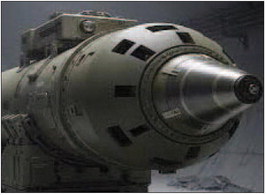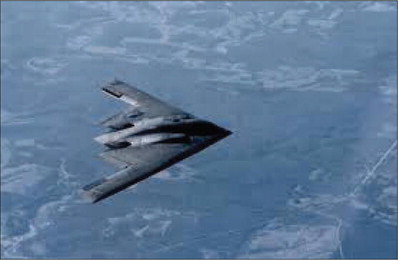It’d be hard to live in this country these days and not have heard about the recent U.S. strike on Iran’s nuclear program. Maybe you caught it on the evening news, maybe it popped up in your feed somewhere between the weather and your cousin’s dog video. Either way, odds are you heard that we dropped something massive—and remarkably accurate—deep into fortified targets halfway across the world.
If you were impressed by the reach, the force, or just the engineering precision of it all, you might be picturing some sleek military lab on the coast. But the truth is, that power came from a very different kind of place.
If you hop in the truck and head east on I-40 long enough, then swing south past the big lakes and winding roads, you’ll land in another version of Oklahoma— where the grass grows like it has a purpose, the roads me- ander without apology, and there’s real shade thanks to these tall wooden things the locals swear are called trees. It’s a far cry from the red dirt flats and straightline winds of the west, but it’s still us. Still Oklahoma. And what they’ve been building down there? It just shook the world.

The recent U.S. strike on Iranian nuclear sites made use of the GBU-57 “Massive Ordnance Penetrator”— a 30,000-pound bunker-busting bomb designed to pierce deep underground targets like the heavily reinforced Fordow and Natanz facilities. That bomb was assembled right here in Oklahoma, at the McAlester Army Ammunition Plant (MCAAP).
Known as the military’s premier bomb-building site, the McAlester plant isn’t often in the news, but its impact is global. The facility, operated by the U.S. Army Joint Munitions Command, has been manufacturing a variety of precision- guided munitions for decades. Built in 1943, MCAAP has quietly powered nearly every major U.S. conflict from World War II to today—adapting to each generation’s demands with precision and pride.
In 2024, the plant underwent a major transformation to meet growing demand—especially for deep-penetration weapons like the GBU-57. That expansion included new infrastructure, upgraded explosive mixers, and enhanced production capacity, allowing the plant to increase output of the bunker- busters from just two bombs per month to six or even eight. It’s a quiet but powerful change that tripled the nation’s ability to maintain and deploy this specialized weapon.
And that timing turned out to be critical. During the June 2025 strikes on Iranian nuclear facilities— nicknamed “Operation Midnight Hammer”—the U.S. dropped 14 of these Oklahoma-built bombs from stealth B-2 bombers. Iran’s Fordow facility was buried deep inside a mountain— beyond the reach of conventional weapons. Only the GBU-57 could get there.
While the exact production numbers remain classified, it’s estimated that dozens of GBU-57s have been produced since the plant’s expansion— placing Oklahoma at the heart of a global defense conversation. And in the wake of its combat debut, the Air Force has already requested expanded support— new fuzes, upgraded tail-kit parts, and sustained production— confirming that what’s being built in McAlester isn’t just effective, it’s essential. And just like your grandmother’s Sunday chicken fry, the Air Force is going back for seconds—boosting output from two bunker-busters a month to as many as eight.
While the exact production numbers remain classifi ed, it’s estimated that dozens of GBU-57s have been produced since the plant’s expansion—placing Oklahoma at the heart of a global defense conversation.
It’s one more example of how this state, often underestimated, plays a quiet but critical role on the world stage. From agriculture to aerospace, weather science to weapons manufacturing, Oklahoma doesn’t just watch world events—it helps shape them.
Did You Know? The McAlester Army Ammunition Plant also produces precision bombs like the GBU-28 and BLU-109 and houses one of the largest explosive-loading facilities in the country.




